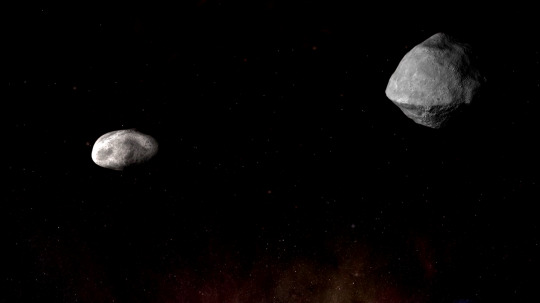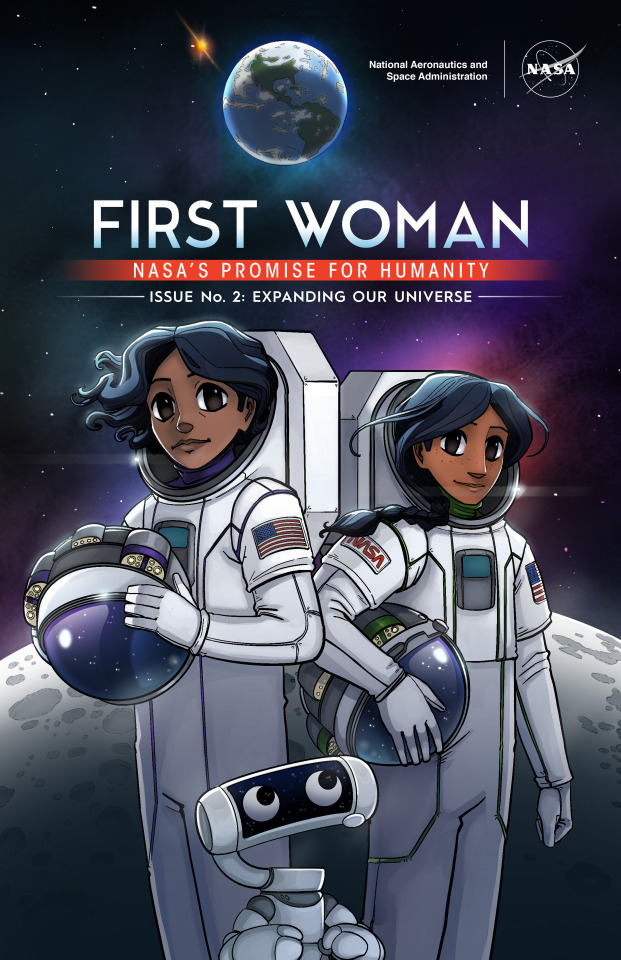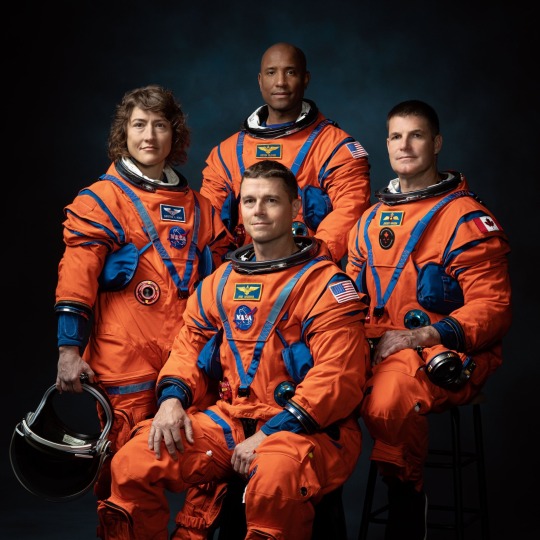#nasa.gov
Text
A Website/meme shared on Dreamwidth:
Your Name (or any word, really) Spelled out in Landsat Images from NASA
Type your name, or any phrase you want (in Latin Alphabet Letters), and you'll get a string of images of those letters as seen from space.
You can download the image in .png format, or, like I did, screen cap and crop. Here's "CapricornOmnikorn:

And here's "love you":

On the website, if you hover over each letter, it will tell you where on Earth it is.
42 notes
·
View notes
Text
TIL from NASA that there are constellations called the TARDIS, the Eiffel Tower, Godzilla, Hulk, Mjolnir, Schrödinger’s Cat, and the Starship Enterprise.
33 notes
·
View notes
Text

Source: https://www.nasa.gov/image-article/telescopes-illuminate-christmas-tree-cluster/
1 note
·
View note
Text
:( so @nasa has it’s own official tumblr account, but they post lots of gif with flashing/ pulsing lights.
Unfortunately this makes visiting their blog risky for people who have neurological conditions like epilepsy or migraine disorders which can be triggered by flashing lights. For some of us, exposure to flashing lights “only” cause hours of pain + confusion, For others it can cause life-threatening issues.
Please, please if you post these gifs, add #flashing to the tags, so we can avoid them safely. If anyone has other nice space blogs that won’t do things like this, please let me know!
People should be able to access sci-com safely. It’s not unusual for this to happen, but I think we can do better than this.
#NASA if you're listening#could you let me see the stars?#science communication#accessibility#maybe they care and just don't know yet?#oh also yeah it's actually nasa#nasa.gov has a list of official social media accounts#always worth checking
2 notes
·
View notes
Text
The DART experiment
The DART (Double Asteroid Redirection Test) is the first-ever space mission to use kinetic impactor technology to deflect an asteroid.
DART was launched in 2021, and its mission ended in 2022 upon its impact with Didymos on September 26th. The Didymos system is not a threat to Earth but was chosen due to passing closely by Earth. At the time of impact, the system was 11 million kilometers from Earth.
The DART experiment is a result of a collaboration between NASA and ESA.

The Didymos System
Didymos is a binary asteroid system, containing two asteroids - Didymos and Dimorphos. Didymos is the larger asteroid, with a diameter of 760 meters, while Dimorphos' diameter is 150 meters.

Results
The DART mission resulted in shortening the orbit in the Didymos system by 32 minutes. Before the impact, it took Dimorphos 11 hours and 55 minutes to orbit Didymos, which has now been lowered to 11 hours and 23 minutes (plus/minus 2 minutes).
Another result of the DART mission is that boulders have been separated from Dimorphos. 37 boulders (size: 1 meter to 6.7 meters across) are drifting away from Dimorphos at ca. 1 kilometer per hour. It's likely that the boulders were already on the surface of the asteroid, as seen in photos sent from the DART spacecraft taken just before the impact.

It's not yet clear how the boulders were separated from Dimorphos, but they might have been a part of an ejecta plume, or a seismic wave might have shaken them loose from the surface.

What's next?
While the size of the impact crater can be estimated by images from Hubble, once the ESA spacecraft Hera is launched in 2024, the actual size will be known. Hera will also be able to give us a better understanding of the results of the DART mission, which will let us refine the next planetary defense techniques used.
#source: esa.int#source: nasa.gov#source: dart.jhuapl.edu#astronomy#dart mission#nasa#esa#hera#didymos system#asteroid
0 notes
Text

Commander Callie Continues Moon Mission in NASA’s Second Graphic Novel
You followed fictional astronaut, Callie Rodriguez, on her journey to the Moon in our First Woman graphic novel, “Issue No. 1: From Dream to Reality.”
In the brand new “Issue No. 2: Expanding our Universe,” find out how Callie and her robotic sidekick RT escape the lunar lava tunnel and what challenges await them on the lunar surface.
See Callie and her new crewmates work together as a team and navigate the unexpected as they take on a challenging mission to deploy a next-generation telescope on the far side of the Moon. Now available digitally in English at nasa.gov/CallieFirst and in Spanish at nasa.gov/PrimeraMujer!
Along with the new chapter, the First Woman app – available in the Apple and Google Play stores – has been updated with new immersive, extended reality content. Explore the lunar surface and learn about the real technologies we’re building to make living and working on the Moon – and eventually, Mars – possible.
Make sure to follow us on Tumblr for your regular dose of space!
#First Woman#graphic novels#comic books#comics#Moon#Artemis#NASA women#women in STEM#women in space#astronauts#CallieFirst#STEM#art#space art#afrolatine#hispanic#artists on tumblr
1K notes
·
View notes
Text









blue bucket of gold + p2 (the lost blue bucket mine wiki page + blue bucket of gold - sufjan stevens // last of the real ones - fall out boy // snow and dirty rain - richard siken // pete wentz’s livejournal // scheherazade - richard siken // golden - fall out boy // the nasa.gov astronomy picture of the day site)
bonus:

#he’s his blue bucket of gold……#hey guys. does anybody else see it. does anybody else want to talk about it#sorry this is messy i just had to exorcise this thought#the meteorite thing happened on the same day as tttyg’s release in case you were wondering why it was here 👍#wanted to get into the chorus and the hiatus but the mobile image limit had other plans#peterick#p2#fall out boy#fob#web weaving
43 notes
·
View notes
Text
Since it’s Hubbles birthday tomorrow :D (the day it officially launched aka April 24) I THOUGHT IT WOULD BE CUTE TO SHARE THE PHOTOS HUBBLE TOOK ON OUR BIRTHDAYS!
This is mine!

It’s a galaxy cluster (so basically a bunch of galaxies) and you can see that it’s gravitational pull is so strong it bends light (which is very cool to me ngl MAJSKANAJ)
Here’s the link if anyone else wanted to do it to!
No pressure tags—
@moonlightmarvey @daydreams-in-the-moonlight @kaleidoskuls @ohfallingdisco @emblazons @howtobecomeadragon @unprofessionalprofessional @l0v3c0r3e @geeky--glasses @foodiewithdahoodie @will80sbyers @twodoorsnotone @wheelerssecret + anyone who wants to!!
#tag games#this is my first time making one guys take pity on me 😔🙏#also it’s SPACE ITS SO COOL#this is me just nerding out
348 notes
·
View notes
Text

Do you recognize this cockpit? 💚
@GinnieSioginny via X
It's the cockpit of F-14A Tomcat used in 1980's by NASA Langley Research Center to test new flight control laws to recover from spins. Tail #991 . s/n : 157991
Sources :
nasa.gov/image-article/…
theaviationgeekclub.com/quick-look-nas…
@kirkjameskirk via X

#f 14 tomcat#grumman aviation#interceptor/fighter#navy#aircraft#us navy#aviation#cold war aircraft#anytime baby!
21 notes
·
View notes
Link
2 min read Hubble Glimpses a Bright Galaxy Group This new NASA Hubble Space Telescope image shows a tangled group of interacting galaxies called LEDA 60847. NASA/ESA/A. Barth (University of California – Irvine)/M. Koss (Eureka Scientific Inc.)/A. Robinson (Rochester Institute of Technology)/Processing: Gladys Kober (NASA/Catholic University of America) This new NASA Hubble Space Telescope image shows a group of interacting galaxies known as LEDA 60847. LEDA 60847 is classified as an active galactic nuclei, or AGN. An AGN has a supermassive black hole in the galaxy’s central region that is accreting material. The AGN emits radiation across the entire electromagnetic spectrum and shines extremely brightly. By studying powerful AGNs that are relatively nearby, astronomers can better understand how supermassive black holes grow and affect galaxies. Galaxy mergers are relatively common occurrences. Most larger galaxies are the result of smaller galaxies merging. The Milky Way itself contains traces of other galaxies, indicating it is the product of past mergers. Astronomers believe somewhere between 5% and 25% of all galaxies are currently merging. This image of LEDA 60847 combines ultraviolet, visible, and near-infrared data from Hubble. The ability to see across all those wavelengths is one of the things that makes Hubble unique. Different types of light across the electromagnetic spectrum tell astronomers different things about our universe. Ultraviolet light traces the glow of stellar nurseries and is used to identify the hottest stars. Visible light shows us moderate-temperature stars and material, and also how the view would appear to our own eyes. Last but not least, near-infrared light can penetrate cold dust, allowing us to study warm gas and dust, and relatively cool stars. LEARN MORE: Hubble’s Cosmic Collisions Hubble Science: Galaxy Details and Mergers Hubble Science: Tracing the Growth of Galaxies Download this image Media Contact: Claire AndreoliNASA’s Goddard Space Flight Center, Greenbelt, [email protected] Share Details Last Updated Jan 23, 2024 Editor Andrea Gianopoulos Location Goddard Space Flight Center Related Terms Active Galaxies Astrophysics Division Galaxies Goddard Space Flight Center Hubble Space Telescope Missions The Universe Keep Exploring Discover More Topics From NASA Hubble Space Telescope Since its 1990 launch, the Hubble Space Telescope has changed our fundamental understanding of the universe. Galaxies Stories Stars Stories James Webb Space Telescope Webb is the premier observatory of the next decade, serving thousands of astronomers worldwide. It studies every phase in the…
59 notes
·
View notes
Text
GUYS oh my gosh I stumbled upon this tab on the NASA site and—
What did Hubble see on your birthday?? It gives you a picture and information! It's so neat!
#Can't specify year but IT'S SO NEAT#NASA#astrophotography#astronomy#spaceblr#hubble#hubble space telescope#of course you don't need to share your actual bday if you don't want to but I wanna see what pics others find!!#i'm plugging in random dates at this point bwahaha#(lies. i did 9/11 on purpose)#photography#space photography#space
70 notes
·
View notes
Text
So, Osiris-REx made it safely home this weekend Bringing with it a Sample of an Asteroid.
So that's a "yay!"
3 notes
·
View notes
Text

“A wide field meteor camera at NASA’s Marshall Space Flight Center recorded this spectacular meteor breaking up in Earth’s atmosphere on Sept. 30, 2011, 8:37 p.m. EDT. Also visible is a star-like object moving slowly toward the upper middle of the field of view — the upper stage of the Zenit booster that launched the Russian Cosmos 2219 intelligence satellite back in 1992. Orbiting 500 miles above Earth, this empty rocket body can get bright enough to be seen with the unaided eye.”
dvdp via nasa.gov
12 notes
·
View notes
Text

THEY’RE GOING TO THE MOON! Introducing the Artemis II astronauts:
Reid Wiseman, Commander
Victor Glover, Pilot
Christina Koch, Mission specialist
Jeremy Hansen, Mission specialist
Four astronauts will venture around the Moon on Artemis II, the first crewed mission on NASA's path to establishing a long-term presence at the Moon for science and exploration through Artemis.
👉🏿 https://nasa.gov/artemis-ii
60 notes
·
View notes
Text

Wow, what a life so far! This guy is a total inspiration! And he did it all to follow his own passions, which is the best part about all of this.
29 notes
·
View notes
Photo

Wraithlike NGC 6369 is a faint apparition in night skies popularly known as the Little Ghost Nebula.
(from nasa.gov)
#hollow knight#hk#hk ghost#the vessel#hk vessel#howling wraiths#abyss shriek#dewdles#digital portfolio
60 notes
·
View notes